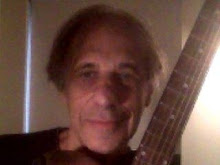As the Writers Guild office boy, I also sometimes delivered union contract negotiating proposals and counter-proposals in manila envelopes to television network executives like Robert Northshield in their plush network television corporate offices. So by December 1970, walking around the Big Media network newsrooms, studios and executive offices during the workday seemed like no big deal anymore and just reconfirmed my original impression that the folks who worked at the U.S. corporate television networks weren’t yet hip to the mass consciousness changes that had developed among U.S. youth between 1964 and 1970.
Besides giving me the opportunity to walk in-and-out of the television and radio network offices and studios frequently, delivering documents for the Writers Guild as its office boy also gave me a good excuse for getting out of the union office during the workday longer than for just a lunch hour. And sometimes, while on the way to deliver or to pick up union documents from the CBS, ABC, NBC or WNEW studios or offices, I would bump into people on the street whom I had known from my pre-1970 years as an SDS anti-war activist.
I bumped into the former head of the Staten Island Black Panther Party chapter, Neal, for example, on the street in front of the CBS Building one day in late November 1970. By then, Neal was no longer active in the Black Panther Party because of the COINTELPRO-encouraged faction-fighting. But, as an individual, Neal still hoped that there would be some kind of Revolution in the 1970s.
Yet by late 1970, Neal had become skeptical that African-American people were going to rise up in the short-run and make the Revolution in the short-run.
“How Black people can still let Nixon continue to rule over them is beyond me?” Neal said with a shrug, after we embraced on the street and explained what we had been up to since we had last talked with each other on Staten Island in early May of 1969. And before we each went on our way, Neal wrote his phone number for me on a piece of paper which he gave me.
A few weeks later, in early December 1970, Neal and his latest white womanfriend, then visited me in my Bronx slum apartment and spent a Saturday night getting high together, laughing, listening to music and recalling our year of 1968-1969 revolutionary activism together on Staten Island. But since both of us no longer had any anti-war left group like either Richmond College SDS or the Staten Island Black Panther Party chapter for whom we were a spokesperson or organizer, there no longer seemed much of a political or personal basis for us getting together again. And we vanished from each other’s lives.
Subscribe to:
Post Comments (Atom)

No comments:
Post a Comment